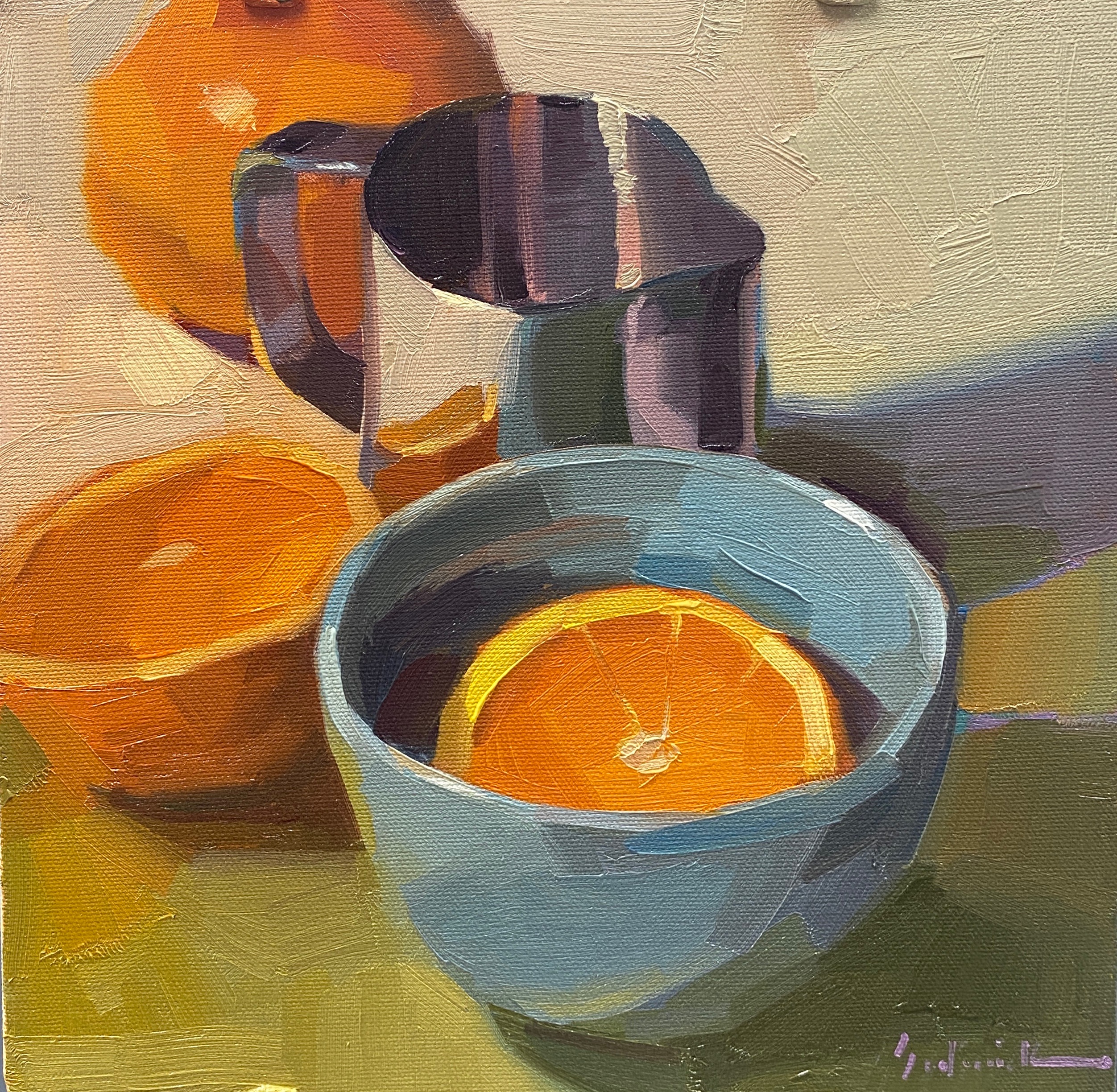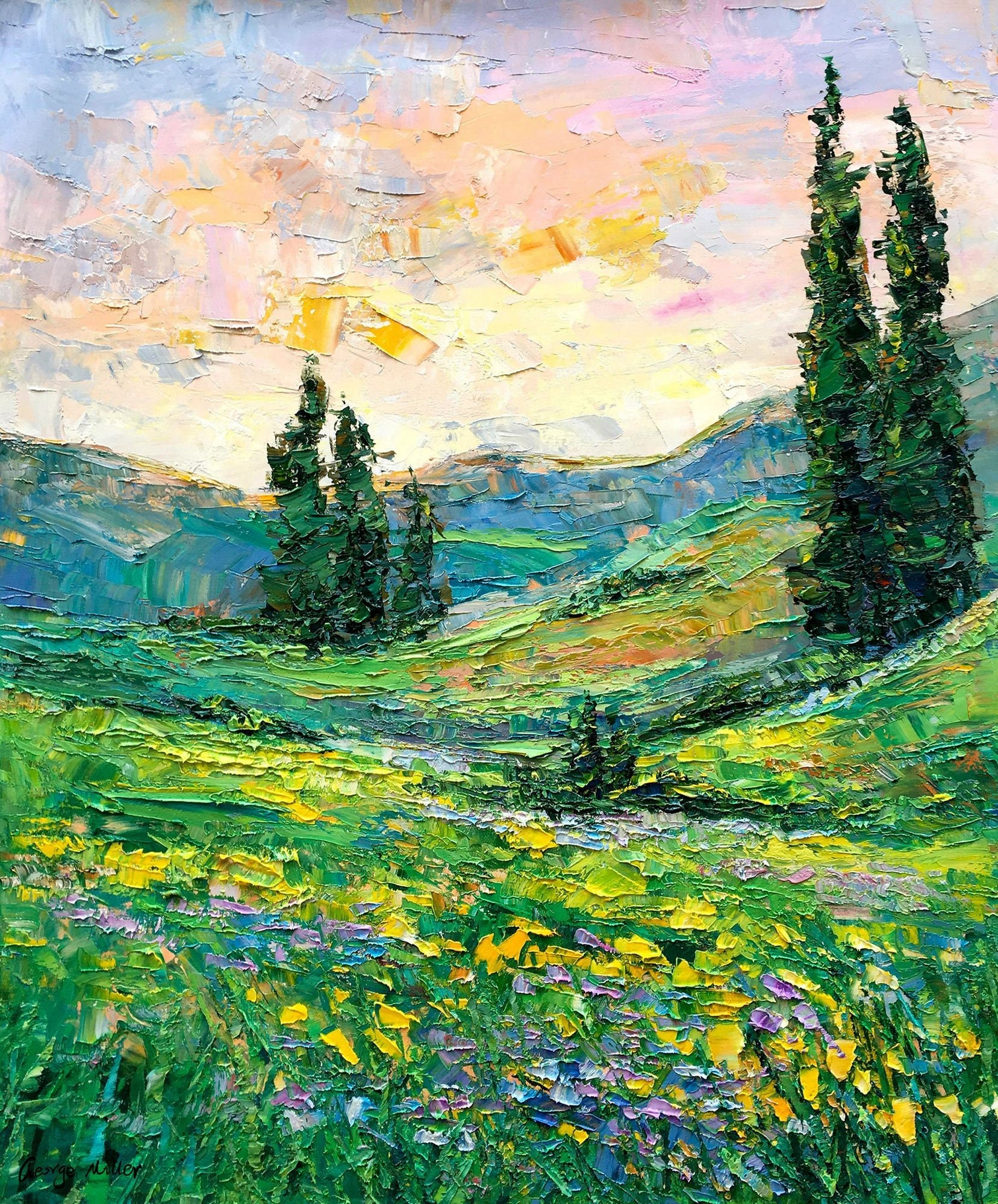Exclusive Gallery Quality Oil Paintings for Sale Now
Wiki Article
Discovering All Regarding Oil Paintings: A Guide to Recognizing Their Elegance and Value
Oil paints have actually captivated audiences for centuries, providing a peek right into the creative proficiency of various eras. Their abundant background is linked with cutting-edge methods and profound emotional expression. Recognizing the materials and methods behind these art work can improve recognition. Additionally, the market for oil paints offers possibilities for collectors and capitalists alike. As one explores this remarkable world, the question develops: what makes an oil painting absolutely important?The Background of Oil Painting: A Trip Via Time
Although oil paint has roots that date back to old times, it really prospered during the Renaissance, when musicians discovered its flexibility and abundant color capacity. Early instances can be mapped to the 7th century, with methods advancing significantly throughout societies. The tool came to be popular in Northern Europe in the 15th century, specifically through the works of artists like Jan van Eyck, that pioneered its use for in-depth realism and vivid hues. This period noted a separation from tempera paints, enabling higher deepness and texture. As oil painting spread, it influenced numerous musicians, leading to masterpieces by distinguished numbers such as Leonardo da Vinci and Rembrandt. The medium's legacy continues, forming the art world well into contemporary times.Recognizing Oil Paints: Materials and Techniques
As musicians check out the globe of oil paints, they encounter a diverse variety of products and strategies that specify this tool. The primary elements of oil paint consist of pigments, which provide color, and drying oils, such as linseed, that bind the pigments and help with application. Different additives can customize the paint's structure and drying time, boosting adaptability. Methods like glazing, where transparent layers are developed, and impasto, which includes using thick paint, permit various visual impacts. In addition, using brushes, combination knives, and even fingers can develop one-of-a-kind appearances and surfaces. Comprehending these products and methods enables artists to totally share their creative thinking and attain the wanted impact in their artwork.The Role of Shade in Oil Paints
Shade plays a critical duty in oil paints, influencing both aesthetic charm and emotional resonance. Understanding shade theory fundamentals, including the partnerships between hues, can boost a musician's capability to convey state of mind and atmosphere. In addition, mastering shade blending techniques enables for greater depth and richness in a paint's palette.

Color Theory Essential
Recognizing shade concept is necessary for artists dealing with oil paints, as it develops the foundation for producing aesthetically appealing and unified make-ups. Shade concept includes the study of just how colors connect, the color wheel, and the partnerships between key, additional, and tertiary shades. Artists make use of complementary shades to boost contrasts and produce focal points, while similar colors advertise unity and cohesiveness within an item. Additionally, the ideas of amazing and cozy colors affect the assumption of deepness and space in a painting. Grasping these principles permits artists to adjust color efficiently, leading the customer's eye and communicating their designated message. Proficiency of color concept eventually enhances a musician's capability to share emotions and concepts through their work.
Psychological Influence of Color
The emotional effect of shade in oil paints plays an important duty in just how viewers view and connect with artwork. Colors stimulate details feelings and moods, influencing the audience's emotional state. Cozy tones like oranges and reds can develop a feeling of heat and power, while cool tones such as blues and eco-friendlies typically evoke calmness or self-questioning. Artists tactically select shade schemes to boost narrative aspects, assisting the target market's emotional trip. The saturation and comparison of colors additionally enhance these effects, attracting focus and developing emphasis. Eventually, the interplay of shades in oil paints not just enhances their aesthetic allure yet likewise functions as a powerful medium for psychological expression, enhancing the audience's experience and interpretation.Shade Mixing Techniques
While many facets of oil paint contribute to the total structure, grasping shade mixing methods is vital for achieving wanted impacts and depth. Shade blending can be approached via different methods, consisting of the subtractive and additive processes. Additive blending includes combining colors of light, while subtractive blending depends on pigments, where shades blend to develop new tones. Artists often use a limited palette to develop unified jobs, comprehending the connections between key, additional, and tertiary colors. Techniques such as glazing and scumbling better improve depth and luminosity. By masterfully mixing shades, an artist can stimulate emotions, produce focal factors, and accomplish a feeling of realism, inevitably elevating the paint's aesthetic and psychological influence.Famous Oil Painters and Their Iconic Works

Famous for their proficiency of color and method, oil painters have developed some of the most celebrated art work in background. Renowned artists like Vincent van Gogh astounded audiences with his stirring brushwork in "Starry Evening," while Claude Monet's "Impact, Sunup" prepared for Impressionism. Leonardo da Vinci's "Mona Lisa" stays an enduring sign of imaginative wizard, showcasing his ability in catching human expression. Rembrandt's "The Night Watch" illustrates his ingenious use of light and shadow. Various other noteworthy numbers consist of Pablo Picasso, who revolutionized contemporary art with his vibrant experimentation in works like "Les Demoiselles d'Avignon," and Georgia O'Keeffe, whose dynamic depictions of blossoms and landscapes assisted define American innovation. Each artist's distinct style contributed significantly to the oil painting landscape.
Just how to Review the High Quality of an Oil Painting
Evaluating the top quality of an oil paint includes a careful analysis of workmanship techniques, along with an evaluation of color and make-up. Observing brushwork, layering, and the application of paint can expose the artist's ability level. Additionally, the interaction of colors and the total setup of components add considerably to the paint's aesthetic worth.Examining Craftsmanship Methods
A careful analysis of workmanship strategies is crucial for figuring out the quality of an oil paint. Critics must initially analyze the application of paint; thick, distinctive brushstrokes may recommend a competent hand, while extremely uniform applications can indicate a lack of deepness. oil paintings for sale. The layering technique is likewise vital; the existence of lusters and varied thickness can boost brightness and complexity. In addition, the quality of the products made use of, such as the canvas and pigments, plays a significant duty in durability and general visual. Attention to detail in components like sides and shifts between shades reflects the artist's dedication to their craft. Eventually, these strategies add to the painting's psychological influence and market value, functioning as signs of the musician's skill and intentEvaluating Shade and Composition
While evaluating the top quality of an oil painting, one should concentrate on the interaction of shade and composition, as these aspects are essential to the art work's overall impact. Color options can establish and stimulate feelings mood; consequently, the artist's scheme should be checked out for harmony and contrast. A healthy structure routes the audience's eye and develops a feeling of unity. Artists commonly use techniques like the guideline of thirds or leading lines to improve aesthetic passion. Additionally, the use of light and shadow can include deepness, boosting the three-dimensionality of the paint. Inevitably, an effective oil painting marries color and composition, engaging the audience and inviting a deeper recognition of the artist's vision and strategy.Taking care of and Preserving Oil Paintings
Proper care and preservation of oil paintings is important for preserving their stability and durability. To safeguard these artworks, it is important to show them away from straight sunlight, which can trigger fading and staining. Preserving a secure environment with regulated temperature and moisture additional aids in stopping damage. Cleaning up need to be done carefully using a soft, dry cloth, avoiding any type of extreme chemicals that could hurt the paint or varnish. Regular assessments for indicators of degeneration, such as flaking or breaking, are suggested. When carrying or keeping oil paintings, correct cushioning and framing are required to stay clear of physical harm. Ultimately, attentive treatment adds to the aesthetic allure and value of oil paintings with time.The Market for Oil Paints: Investing and accumulating
Recognizing the market dynamics for oil paintings is crucial for investors and enthusiasts alike. The value of these artworks is affected by numerous factors, consisting of the artist's credibility, historical significance, and current patterns. Collection agencies frequently seek items that reverberate directly while thinking about potential admiration in worth. Galleries and auctions function as primary venues for trading, with prices fluctuating based upon need and rarity. Investing in oil paints needs study right into the market, as well as an understanding of credibility and provenance. Furthermore, emerging musicians might supply possibilities for substantial returns, while established names can command high rates. Overall, a critical technique to accumulating can produce both visual pleasure and economic incentives.
Regularly Asked Questions
What Are the Ecological Impacts of Oil Painting Materials?
The environmental impacts of oil painting products consist of the release of volatile natural compounds (VOCs), unsafe waste generation, and source removal for pigments. These factors add to pollution and eco-friendly deterioration, increasing worries amongst ecologically conscious musicians and consumers.Exactly How Do Different Canvases Affect Oil Painting Outcomes?
Various canvases affect oil painting results substantially. Absorbency, appearance, and surface area quality can change paint application, drying times, and color vibrancy. Musicians often pick particular canvases to attain preferred results and boost their artistic expression.Can Oil Paintings Be Brought Back if Damaged?
If damaged, Oil paintings can certainly be brought back. Specialist conservators make use of different techniques to repair splits, clean surfaces, and address staining, ensuring that the artwork maintains its initial beauty and value for future generations.What Are the Signs of an Original Oil Paint?
The signs of an original website oil paint consist of visible brush strokes, structure variants, and an uneven canvas weave (oil paintings for sale). In addition, authenticity may be confirmed via provenance, trademarks, and the existence of a varnish layer unique to oil mediumsHow Has Innovation Influenced Modern Oil Painting Techniques?
Innovation has greatly influenced contemporary oil painting methods by presenting digital devices for preparation, improved products for appearance and longevity, and online platforms for selling and sharing art, therefore broadening musicians' imaginative opportunities and audience get to. Oil painting has roots that date back to ancient times, it really flourished during the Renaissance, when artists found its convenience and abundant color possibility. The emotional effect of shade in oil paints plays an essential function in just how viewers view and attach with art work. While many aspects of oil painting contribute to the total composition, grasping shade mixing strategies is crucial for achieving preferred impacts and deepness. Reviewing the high quality of an oil painting entails a mindful analysis of craftsmanship methods, as well as an analysis of color and make-up. While evaluating the high quality of an oil painting, one should focus on the interaction of color and structure, as these elements are basic to the artwork's overall influence.Report this wiki page